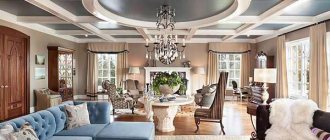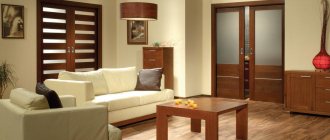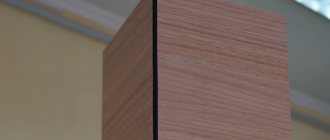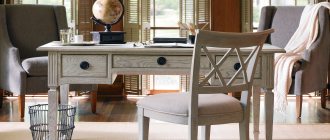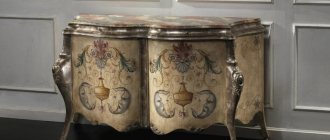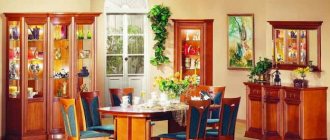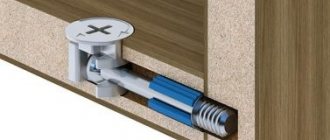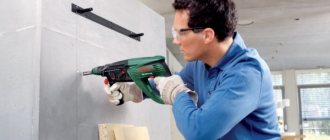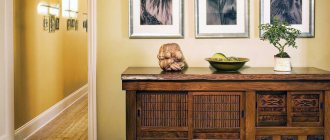A furniture corner is a hidden element, with the help of which the elements of the sets are tied together. It is used in the assembly of both cabinet and soft products. This fastener is made of metal or plastic. The special design implies exposure to increased loads. Metal furniture corners are widely used, and the elements themselves may vary, so you need to be careful when choosing.
What is a furniture corner
This is the name of a special type of fastener suitable for all furniture assembly operations. When manufacturing corners, all technical requirements are taken into account: despite their structural simplicity, the products are able to withstand significant operating loads. They come in several types, with different designs and areas of application.
This type of fastener is reliable and affordable. For built-in furniture it serves as the main connection, which can safely be called universal. The only thing is that after installation work it remains clearly visible and does not always have an attractive appearance.
Visually, plastic products look better, but they can withstand less load. To install them, you do not need to make any additional holes. Installation work is carried out using self-tapping screws.
The corners are characterized by the simplest possible design. This is a bent metal plate, where the bend point is called an edge, and the edges are called flanges. Products may have an unusual color or shape. With their help, internal connections are made or they are used as decorative fittings.
There are several types of corners that are installed using nails, screws or Euroscrews.
What is it needed for
In furniture production, there are many fasteners that differ in shape, size and other parameters. A furniture corner is a basic piece of furniture in the form of a consumable material. A high-quality corner provides a tie between two flat pieces of furniture, and they can be made of two different materials, for example, wood or metal. To connect to glass you will need a special pad.
Where they are used:
- create a tight internal connection of structural parts from the same or different materials;
- act as a decorative element;
- serve as decoration for various shelves and racks, as well as all kinds of drawers;
- Thanks to the protective properties of this element, the fastenings remain reliable for a long time.
Furniture mounting brackets are suitable for cabinet and modular structures.
Specifications
Metal fastening corners for furniture, which are made of aluminum or steel, are in great demand. They are coated on top with zinc, which is necessary for protection against corrosion. If such a screed is in normal conditions, that is, it is not affected by negative factors, then it will serve for many years without changing its performance properties.
Dimensions and other parameters of fittings are taken into account depending on the material used and design features. Each type of fastener can only withstand a certain load and weight. It has 2 symmetrical holes on both sides, which prevents skewing.
A decorative corner for furniture can be used by both professionals and beginners when creating various designs.
Product Features:
- Versatility. Suitable for various connections. There is no need to drill holes during installation, so the front of the panels remains intact.
- High connection reliability. With their help, various structures are assembled, and shelves or other products are attached on which heavy objects will stand. We should also highlight the reinforced furniture version, which has a special coating that protects against corrosion and at the same time can withstand significant loads.
- A large assortment. The components differ in shapes, colors, and the presence of a decorative cover. This allows you to choose the best option that suits all the parameters of the interior of the room.
Thus, this is a universal and popular design that has many advantages. It can be used for different fastening areas.
Scope of application of fasteners
Most often, screws, nails and confirmants are used to assemble furniture. Fasteners in the form of nails are used mainly for fixing the back walls of cabinets and in the process of upholstery. Decorative models of nails that are used as decoration are also common.
Screws in furniture production are most often used for hanging various fittings (slats, hooks, decorative elements, opening handles). However, this does not only apply to confirmations or Euroscrews. Furniture fasteners in the form of confirmant are widely used for the production of furniture from chipboard materials and for fastening shelves and panels.
Fasteners for furniture assembly in the form of corners and ties, used to fix the load-bearing elements of the product. The most modern and popular is the eccentric coupler. Its design includes special nuts, pins and eccentric cylinders. High-quality products are assembled using this screed, but the use of other fasteners is not excluded. Thus, furniture corners are often used to add shelves and tabletops.
Types of corners depending on size and purpose
At the moment, there is a wide variety of dimensions of this furniture fittings. When choosing a specific size, you need to take into account the expected loads and the materials from which the connected elements are made. The dimensions of the corner depend on its purpose.
Main types:
- For light connections. The products have a thickness of 2 mm and dimensions: 40 × 40 × 20 mm. This type of screed is relevant for installing small shelves and similar structures that will not be loaded with heavy objects.
- For corner connections of heavy beams. Installed in both horizontal and vertical planes. Dimensions range from 40 x 40 x 60 to 100 x 100 x 100 mm.
- Perforated. Special holes allow them to be installed using durable hex bolts. Such products are used to fasten really heavy structures.
- Reinforced. They are used by qualified workers in the construction industry.
- With lock nut. These are reinforced and perforated modifications.
Each fastener has its own purpose. There is no point in using reinforced parts to install a regular shelf, since the costs will be inappropriate, because there will be no benefits from this.
Installation of fasteners according to diagrams
In accordance with the created diagram, all stationary internal elements of the cabinet are fastened together:
- lower horizontal panels located in the right and left sections of the cabinet;
- bottom and cover;
- vertical partition in the lower right section.
To select the fastening installation mode according to the diagram, you must specify the group of panels to which the panels to be fastened are joined. In this case, these are four vertical posts. After specifying them, all possible joints are automatically determined. At the same time, they are “intelligently” sorted into two classes, visually distinguished by color:
- active joints to which the selected fastening scheme will be applied (shown in green in Fig. 4);
- inactive joints on which fasteners will not be installed (they are marked in orange in Fig. 4).
Rice. 4. Automatic highlighting of joints
Rice. 5. Fastening of stationary internal elements
The designer's task is to edit the statuses of the joints as necessary. Simply specifying a joint changes its status to the opposite. In the case under consideration, it is necessary to make the joints of four removable shelves located in the left section of the cabinet inactive. After this, the selected fastener installation scheme is automatically applied to all active joints (Fig. 5). Thus, with the help of just one command, fasteners can be installed on many panels at once, and errors in its placement are eliminated - naturally, with a well-created diagram. The main thing is that the designer correctly indicates the active joints.
To fasten the base strips, we will create another scheme that provides for the symmetrical installation of euroscrews. When choosing a symmetrical fastener placement pattern, the distance from the edges of the joint is set in one of three ways:
- the minimum possible value in millimeters;
- the minimum possible value as a percentage of the joint length;
- fixed value.
Otherwise, creating a schema is done in the same way. The third scheme is necessary for installing removable shelves, and the fourth is for attaching the back wall. In the last scheme, it is advisable to choose the “variable pitch” type. It implements a symmetrical arrangement of fastener elements with a step not less than the specified minimum value.
If you have a large number of joints, it can be useful to make them all active or, conversely, inactive, and then change the status of certain joints.
What materials are they made from?
The furniture corner is made of metal or plastic. Each material has its own characteristics that affect operating conditions.
Metal
If metal is used to make the corner, then the final product is a massive stamped product. The design involves a hole on one side and a groove on the other. Connecting elements of this type can also take the form of a single strip, bent at an angle of 90°. They are attached using self-tapping screws, which makes them easy to use.
Thanks to the stiffening ribs, their load-bearing capacity increases. Metal parts are used in the production of new furniture or repair of old ones. They are made from high quality carbon steel, which is additionally coated with zinc for protective purposes. Metal corners are used to fasten shelves, tabletops, beams, plinths, and so on.
Plastic
As a rule, these are small-sized products. Fastened with self-tapping screws. Using plastic corners, it is allowed to fix only small and not too heavy structures, which is explained by the properties of the material.
The plastic bracket can be installed both on the outside and in the hidden area of the furniture body. Single and double models are available, with decorative caps included. Their color can be: white, beige, dark brown, gray, red-brown and black, which allows the buyer to choose the detail that matches the interior items.
Table top screed
This element is used quite rarely, because usually kitchen furniture is designed in such a way that the countertop is solid. As you can see in the photo, the furniture fastener is a long screw that rests on two washers and is secured with an elongated nut. Typically, such a product is used in conjunction with dowels, which increases the strength of the joint. Several ties are applied to the width of the tabletop.
To install such a furniture element, you will need to drill two holes using a cutter. After this, two holes are drilled from the end to the larger hole. A cutter will be required with a diameter of 35 mm. Instead of an end hole, you can choose a groove using a router. After this, the washers and bolt are installed, as well as the nut is tightened.
Criterias of choice
Properly selected high-quality fastening elements ensure the reliability of the furniture.
When choosing, you need to consider the following:
- what material are they made of?
- size;
- appointment;
- maximum withstand load;
- under what conditions it will be used.
Nowadays, corners are in demand fasteners. Therefore, manufacturers produce a wide variety of designs that differ in many respects. You need to be careful and choose quality products, adhering to their purpose. Only this will ensure a long service life of the connection.
Due to low strength, this type of connection is not used in the professional field. For domestic purposes, for example, for installing a countertop or assembling a cabinet base, it is suitable. Many modern metal models are additionally equipped with a plastic cap, which gives the connection a decorative appearance.
Other types of furniture fasteners
One of the old types of connection is a dowel. This is a high-quality, reliable and cheap mount. Once assembled it is completely unnoticeable. To connect the parts you need the dowel itself, a drill, a hammer and PVA glue. Installation of the element requires some skill and accuracy of marking.
It is hardly noticeable and ensures the strength of the connection. Manufacturers call this type of ties differently: minifix, rafix, rondofix. It consists of an eccentric, a fitting and a rod. The difference between the fasteners is the diameter of the eccentric.
The screw coupler, or barrel, consists of two elements. The barrel has a nut inside. The screw is tightened tightly, which creates strength and reliability of fastening. The screw head on the side surface can be closed with a plug. The screed is difficult to install and requires precision in the intersection of parts.
Screws and self-tapping screws are furniture fasteners of approximately the same shape. They differ in tip, slot and type of thread. They are made from high quality materials with anti-corrosion coating. They are used without preliminary drilling of the materials being fastened, which speeds up the installation process itself.
Installation
As an example, let's take a plastic corner equipped with a removable lid. It may seem like there is nothing complicated - just tighten the screws and you're done. But even this simple task has a little trick. If you screw the part incorrectly, it will not hold well and form a gap.
During installation, the first thing to do is determine the distance from the edge to the center of the hole. Each type of corner will have its own numbers, in this case it is 15 mm. Now you need to correctly position the parts being pulled together so that one rests on the other. It is convenient to make markings with a carpenter's square.
Marks on parts can be made with a pencil, but it is quickly washed off. Recesses made with an awl will do. Please note that you should set aside not 15 mm, but 16. The corner is installed opposite the hole and the self-tapping screw is screwed into it. If the recesses were made in advance with an awl, then screwing in the screws is easier. The finished connecting element will not adjoin the edge of the part, which is why 1 mm is left.
Types of hardware
As mentioned above, hardware is divided into two large groups: general purpose
and
industrial
. The first includes metal products used in everyday life: knives, scissors, saws, axes, shovels and other tools. Industrial hardware is standardized factory-produced hardware intended for repair, construction, manufacturing and other areas. This group includes fasteners, for example, screws, bolts, anchors, rivets, as well as wire and products made from it, cotter pins and other products.
Fastening hardware is made from various metals and can be: steel
,
brass
,
aluminum
.
Stainless steel
products are suitable for use in aggressive environments.
In addition, there are metric hardware
for fastening, equipped with threads, as well as models
of complex configurations
.
Popular fasteners and hardware
The most popular types of fasteners include universal products that are used in various fields.
Bolts
with external metric full or partial thread, they are made in the form of a rod with a four-, six-, octagonal, cylindrical or spherical head. A nut is required to create the connection.
Nuts
, equipped with a metric threaded hole, like bolts, have the shape of polyhedrons, and are also complemented by a slot, radial holes and other elements.
Washers
, made in the form of a round flat part with a hole in the middle, help to increase the support area of the head of a bolt or nut, and also prevent deformation and spontaneous unscrewing.
Screws
are connecting elements in the form of metal threaded rods with heads with slots or knurls. In addition, products are produced with a slot located directly on the rod.
Dowels
provide a basis for installing other fastening elements, such as screws, into load-bearing bases.
Furniture guides
Guides are a drawer pull-out system. All extension systems can be divided into two types: - guides for ordinary drawers made of chipboard or wood; - boxes with metal parts in their design (sides, sometimes backs)
Roller and ball guides are now widely used.
| Roller drawers are easy to use and, when installed correctly, make it easy to open and close drawers. |
| Ball guides are high-tech, varied, and vary in complexity. They allow the drawers to be fully extended, provide smooth running and silent soft closing of the drawers. |
| Metaboxes are sidewalls for economy class boxes. Metaboxes are made on the basis of roller guides, but have serious differences. The metabox set consists of two support guides (left and right) and two guides, which are also the side walls of the box (left and right). This is one of the conveniences of metaboxes, because... there is no need to make the side walls of the box from chipboard or other material. You only need to make the bottom, back wall and front of the box of the required size. |
And the fact that the bottom is made of laminated chipboard (mostly the thickness of laminated chipboard is 16mm), and not from fiberboard (mostly the thickness of fibreboard is 4mm), gives the product extraordinary strength and reliability. Another advantage of metaboxes is the fastenings for the facade, which are adjustable, ensuring that the front of the box is installed exactly on the body of the furniture. There are also special extension bars for metaboxes that allow you to increase the working height of the metabox to the desired size, and separation systems will allow you to properly organize the workspace inside the metabox itself. Metaboxes are made of steel, 1.2mm thick and coated with high-strength enamel in various colors (mainly white and metallic).
The material of the rollers themselves is high-strength plastic , designed for more than one thousand openings. The load (weight of the box) supported by metaboxes directly depends on their length. The longer the length, the less the load: from 10kg to 20kg. (open state). Metaboxes are considered a partial extension system (3/4), i.e. extend three-quarters of their total length. Metaboxes can be used for both overlay and inset facades.
| Tandemboxes are a high-tech mechanism for drawing out drawers. The tandembox is equipped with a maintenance-free guide system that is hidden from view under other parts and is highly resistant to lateral loads. The high-quality drawer pull-out system has excellent movement, easily pulls drawers into the cabinet, and is equipped with a lock that prevents them from being unintentionally left in the extended position (important for the safety of children). The guide system requires no maintenance and is highly wear-resistant. It leaves no traces of metal abrasion or any other contaminants: cleanliness and hygiene are guaranteed! Maximum load - 30kg. |
